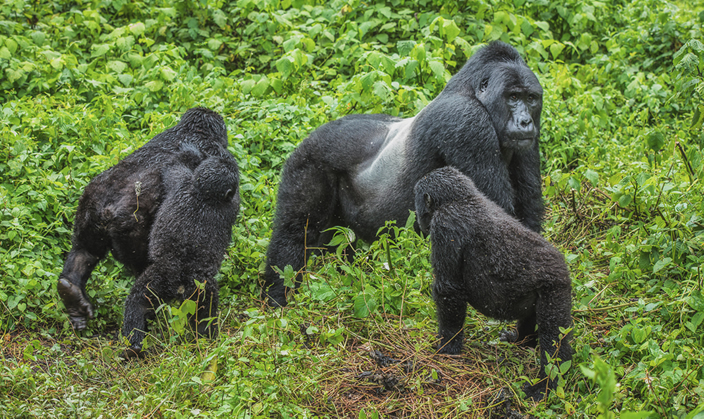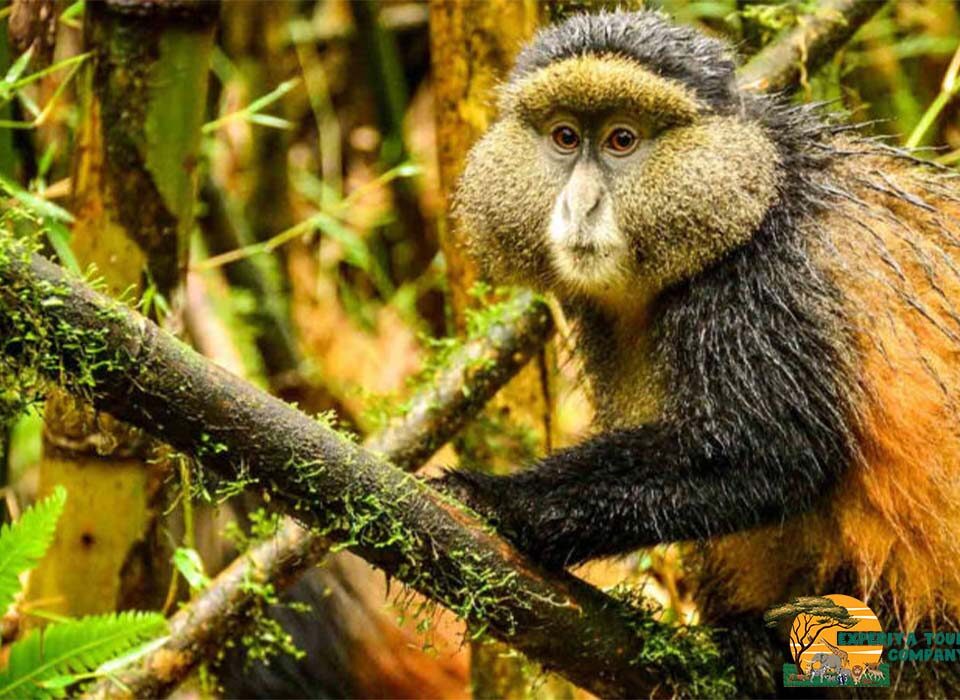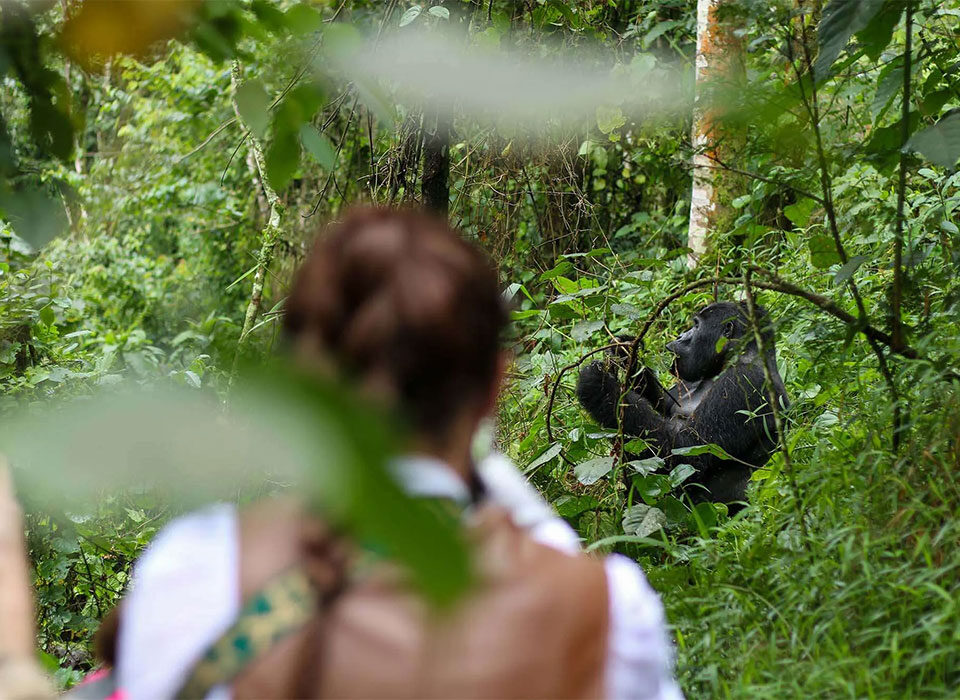
How much is a gorilla trekking permit in Uganda?
October 22, 2025
How difficult is gorilla trekking in Bwindi?
October 22, 2025What’s the best time to visit Bwindi Impenetrable National Park?

What’s the Best Time to Visit Bwindi Impenetrable National Park?
Hidden in the emerald highlands of southwestern Uganda lies Bwindi Impenetrable National Park, one of Africa’s most captivating wilderness destinations. Home to nearly half of the world’s remaining mountain gorillas, this UNESCO World Heritage Site is where travelers embark on life-changing journeys through thick tropical jungles to encounter these gentle giants. But before you pack your hiking boots and set off for this misty wonderland, one key question arises — what’s the best time to visit Bwindi Impenetrable National Park?
The truth is, Bwindi is magical all year round, but your experience can vary depending on the season. From gorilla trekking conditions to photography opportunities, weather, and accessibility, the timing of your visit can shape your entire adventure. Let’s dive deep into the details and help you plan the perfect time to explore this breathtaking Ugandan treasure.
Understanding Bwindi’s Climate and Landscape
Bwindi Impenetrable National Park sits on the edge of the Albertine Rift Valley, stretching over 331 square kilometers of dense rainforest. Elevations range from 1,160 to 2,600 meters above sea level, creating a cool, misty, and humid climate throughout the year.
Because of its altitude and equatorial location, Bwindi experiences a tropical rainforest climate, which means rain can fall at any time — even during “dry” months. However, there are distinct wet and dry seasons that significantly influence trekking conditions and visitor experiences.
The park’s weather patterns are shaped by two main rainfall periods:
Long Rainy Season: March to May
Short Rainy Season: October to November
Dry Seasons: June to September and December to February
Understanding these cycles is the key to determining when to visit for optimal conditions.
Dry Season: The Best Time for Gorilla Trekking (June to September & December to February)
The dry seasons are widely regarded as the best time to visit Bwindi Impenetrable National Park, particularly for gorilla trekking. During these months, the park receives less rainfall, and the trails are relatively drier and more manageable.

Why the Dry Season is Ideal
Easier Hiking Conditions
The trails through Bwindi’s thick vegetation can be challenging, especially after heavy rain. In the dry season, paths are less muddy and slippery, making trekking less strenuous — especially for those not used to steep jungle climbs.
Better Visibility and Photography
Clearer skies and less mist provide excellent visibility, perfect for capturing breathtaking photos of gorillas, forest canopies, and the surrounding hills. The lighting is also more consistent, giving photographers an edge.
Higher Chances of Spotting Wildlife
During the dry months, vegetation is thinner, and animals — including gorillas, monkeys, and birds — are easier to spot. You might even encounter forest elephants, duikers, or colorful butterflies along your trek.
Comfortable Temperatures
Despite being in the tropics, Bwindi’s high altitude ensures moderate temperatures year-round, averaging between 11°C (52°F) at night and 23°C (73°F) during the day. The dry season offers cool, comfortable weather ideal for hiking.
Tourist-Friendly Infrastructure
Most lodges, roads, and facilities are fully operational during this time. Roads leading to Bwindi’s sectors — Buhoma, Rushaga, Nkuringo, and Ruhija — are in better condition, making access smoother.
Things to Keep in Mind
The dry season also happens to be peak tourist season. Gorilla trekking permits sell out months in advance, especially from June to August. To avoid disappointment, it’s crucial to book your permit at least 3–6 months ahead. Lodge rates also tend to be higher due to increased demand, but the weather and trekking comfort more than make up for it.
Wet Season: The Green, Quiet, and Photogenic Months (March to May & October to November)
While most travelers prefer the dry season, the wet months offer their own unique charm — and often reward the adventurous traveler with a more tranquil, intimate experience.
The Magic of the Rainy Season
Fewer Tourists, More Solitude
During the rainy months, Bwindi sees fewer visitors, making it a perfect time for travelers who value privacy and tranquility. You can enjoy the misty forest trails without crowds, and even the gorilla encounters feel more personal.
Lush Green Landscapes
Rain rejuvenates the forest, turning it into a vivid green paradise. The trees glisten with moisture, streams run stronger, and the entire jungle feels alive. For photographers, this is a dream — misty mornings, vibrant foliage, and moody atmospheres make for cinematic shots.
Discounted Lodges and Packages
Many lodges and tour operators offer low-season discounts during the wet months. If you’re traveling on a budget, this is an excellent time to experience gorilla trekking at a lower overall cost without compromising quality.
Abundant Birdlife
Bwindi is one of Africa’s premier birding destinations, home to over 350 species, including 23 Albertine Rift endemics. The rainy season coincides with bird breeding periods, meaning more sightings and colorful plumage for avid birders.
Challenges of the Wet Season
Of course, the rains also bring challenges: trails can become slippery and more difficult to navigate, road access may occasionally be disrupted by mudslides or flooded sections, and gorilla tracking can take longer as gorillas sometimes move to higher or thicker terrain. Still, these conditions don’t stop dedicated travelers — especially those who crave adventure and want to see the forest at its most vibrant.
Month-by-Month Guide to Visiting Bwindi
January – February
A continuation of the short dry season, these months are great for trekking, photography, and general travel comfort. Gorilla permits are available, though early booking is still wise.
March – May
The long rainy season sets in. Trails are muddy but the forest is lush and less crowded. Ideal for travelers seeking solitude and lower prices.
June – August
The prime season for gorilla trekking. Weather is dry, skies are clear, and sightings are frequent. Expect many travelers, especially during July and August.
September
Still part of the dry season, though occasional showers begin toward the end of the month. Excellent for trekking and photography.
October – November
The short rains return, but the forest looks spectacular. Less competition for permits, and the mist creates an enchanting jungle atmosphere.
December
The short dry season begins, marking another great window for trekking. Many travelers come during the festive holidays, so plan and book early.
The Best Time Based on Your Interests
For Gorilla Trekking: The dry months (June–September and December–February) are best. Trails are stable, and gorilla groups are easier to reach.
For Birdwatching: Visit between March and May when migratory species and breeding activity peak. The forest bursts with bird songs and color.
For Budget Travelers: Opt for the low seasons — April, May, or November — when lodges and tour companies offer discounted rates, and the forest feels blissfully uncrowded.
For Photography: The wet seasons deliver dramatic, misty atmospheres, while dry months offer clear lighting and excellent wildlife visibility.
Why Bwindi Is Worth Visiting Year-Round
No matter when you visit, Bwindi never disappoints. Every season carries its own kind of beauty. During the dry months, the trekking is easier and comfortable. During the rains, the park transforms into a mysterious, dreamlike world filled with color, mist, and melody. Unlike many wildlife experiences that depend heavily on migration or breeding seasons, gorilla trekking remains consistently rewarding all year. The gorillas don’t migrate — they live permanently in the forest, and park rangers track their locations daily. So regardless of when you visit, your chances of encountering them are almost guaranteed.
Practical Tips for Your Visit
Book permits early, especially during peak months when they sell out quickly. Reserve through a licensed tour operator like Experiya Tour Company. Pack proper gear such as sturdy hiking boots, long-sleeved clothing, rain jackets, gloves, insect repellent, and waterproof bags for electronics. Hire a porter for about USD 20–30 to carry your backpack and assist on steep trails — it’s a huge help and supports local livelihoods. Stay hydrated, maintain basic fitness, and carry cash for tips and small purchases as some lodges may not accept cards.
Why You Should Visit Bwindi with Experiya Tour Company
Planning a gorilla trekking adventure can be complex — securing permits, arranging transportation, booking lodges, and ensuring all logistics run smoothly. That’s where Experiya Tour Company makes all the difference.
Experiya is a trusted Ugandan safari operator with years of experience in organizing tailor-made gorilla trekking tours across Bwindi Impenetrable National Park. Their professional team ensures that your journey is seamless, safe, and deeply rewarding. From permit acquisition and accommodation booking to transportation and expert guides, Experiya handles every detail so you can focus entirely on the adventure.
They also go beyond gorillas — curating incredible add-on experiences like visits to Lake Bunyonyi, Queen Elizabeth National Park, and Mgahinga Gorilla National Park. Whether you seek luxury, comfort, or adventure, Experiya offers personalized packages to suit your travel dreams and budget. If you want to experience Bwindi’s beauty at its best — no matter the season — Experiya Tour Company is your perfect companion for a once-in-a-lifetime safari.



